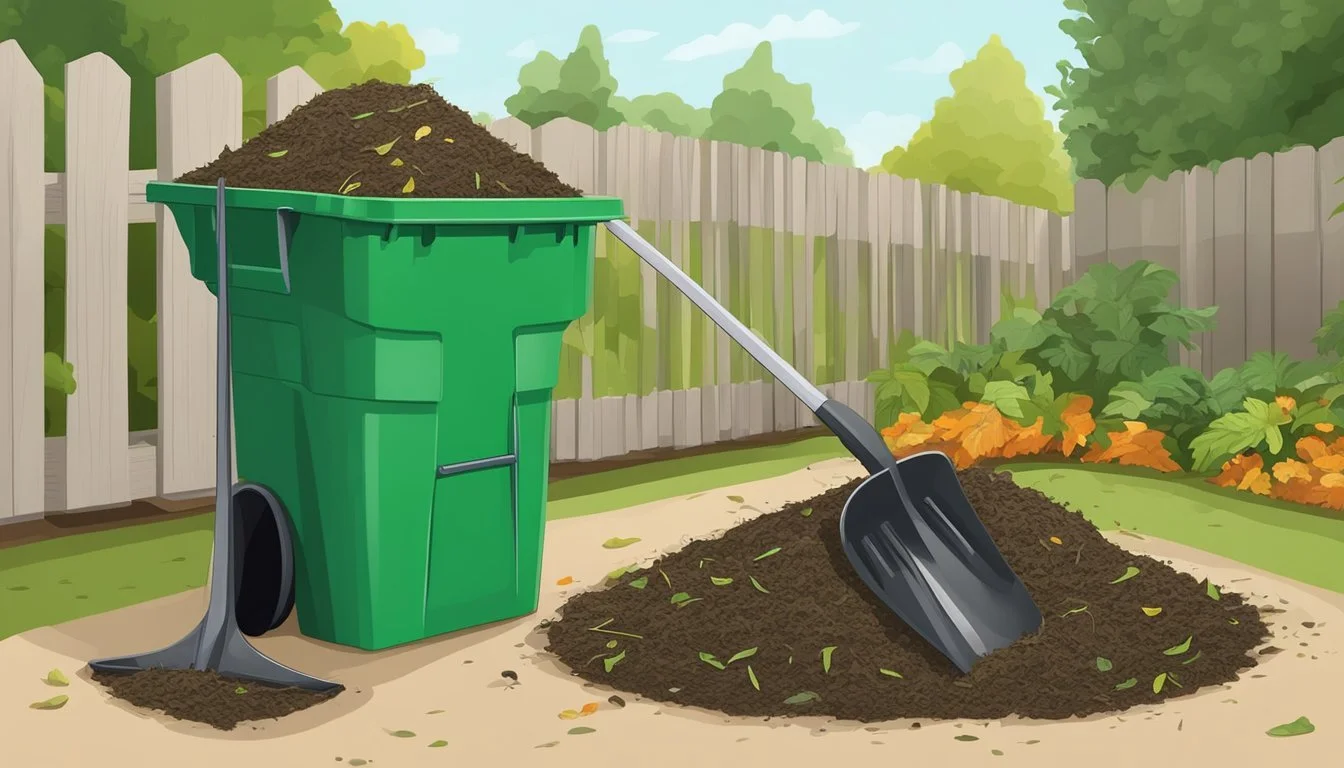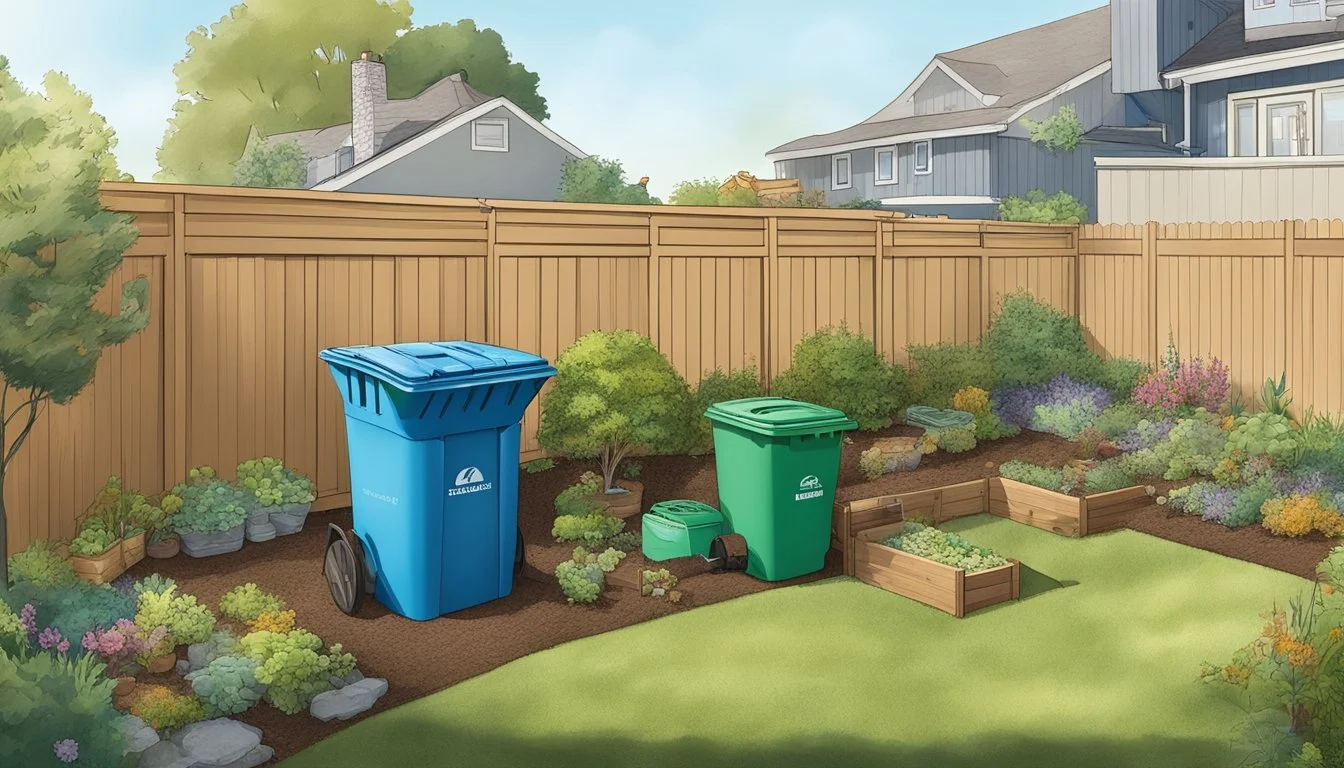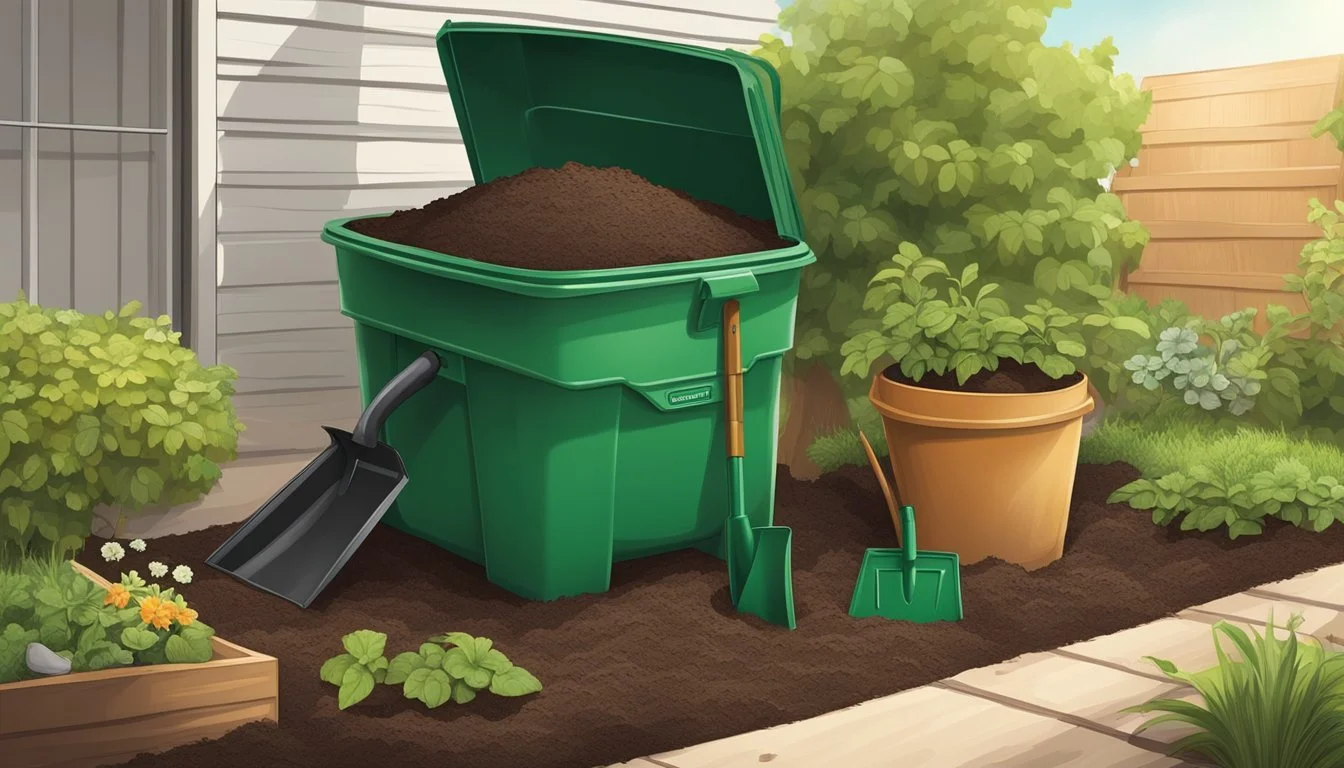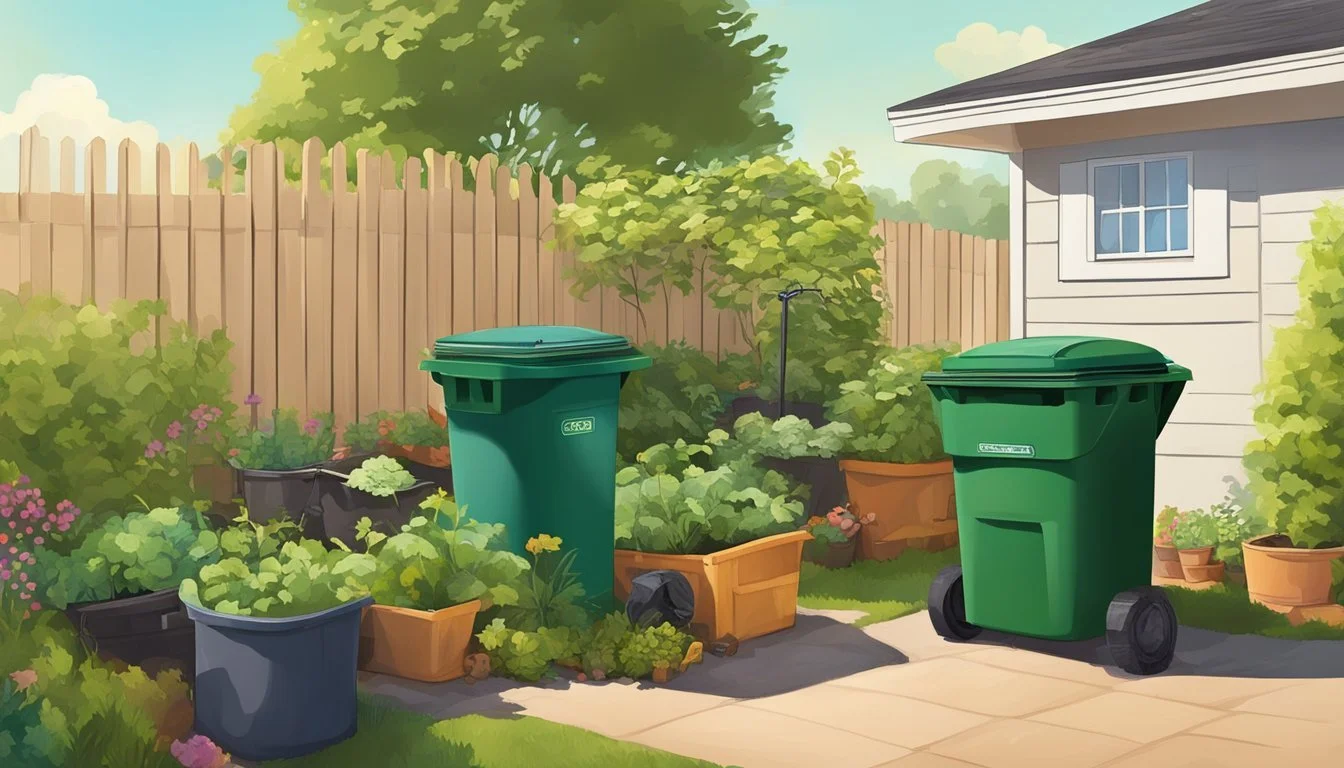Guide to Composting in San Mateo, CA
Essential Tips for Local Residents
Composting in San Mateo, California, offers an excellent opportunity for residents and businesses alike to contribute to a more sustainable environment. San Mateo County has taken significant strides to embrace eco-friendly practices, and an integral part of this green initiative is the process of composting. Composting transforms organic waste into a valuable amendment for enriching soil, which, in turn, benefits both home gardens and local agriculture. By engaging in composting, San Mateo community members can reduce their landfill contribution, lower methane emissions from organic waste, and create a natural fertilizer that helps to nourish the earth.
The City of San Mateo and organizations like the SMC Office of Sustainability have recognized the importance of composting and actively promote it through various programs and resources. Residents are encouraged to participate in backyard composting by using proper bins and techniques to recycle yard and food waste. For those without a yard or limited space, the SMC Office of Sustainability offers workshops to teach composting methods that are suitable for apartment living, ensuring that everyone has the chance to contribute to composting efforts.
In addition to educating the public about the benefits and methods of composting, San Mateo provides accessible services to simplify the process for its residents. The Recology San Mateo County green composting cart program accepts a range of organic waste, which is then turned into compost for use in local gardens and landscapes. This initiative underlines San Mateo's commitment to resource recovery and waste reduction, which are key elements in the pursuit of a more sustainable future.
Benefits of Composting
Composting in San Mateo provides tangible advantages by transforming organic waste into valuable soil amendments, reducing reliance on landfills, and contributing to environmental conservation. It's an integral part of the city's sustainability and waste reduction goals.
Soil Improvement
Nutrient Enrichment: Compost adds essential nutrients back into the soil, including nitrogen, phosphorus, and potassium.
Structure: Introducing compost improves soil texture, promoting better drainage and aeration.
Water Retention: Compost helps soil retain moisture, reducing the need for frequent watering and conserving water resources.
Waste Reduction
Diversion from Landfills: Proper composting can significantly decrease the volume of waste sent to landfills.
Organic Material Recycling: Composting is a form of recycling for organic materials, turning potential waste into a resource.
Environ. Conservation
Greenhouse Gas Mitigation: By diverting organic waste from landfills, composting reduces methane emissions, a potent greenhouse gas.
Sustainability: Composting supports zero waste initiatives and promotes a more sustainable, green approach to resource management.
Basics of Composting
Composting is an effective process for transforming organic waste into a nutrient-rich amendment for soil that benefits plants and the environment. It's both an art and a science suited for backyard or community garden settings.
What is Compost?
Compost is the product resulting from the controlled decomposition of organic material. It is rich in nutrients and used to enrich the soil, which in turn supports plant growth. This natural process breaks down organic waste—including leaves, fruit scraps, and vegetable peelings—into a humus-like substance, improving overall soil health.
Choosing a Composting Method
When deciding on a composting method, one must consider space and resources. Backyard composting is ideal for individuals with outdoor space. It involves creating a compost pile or bin where organic waste can be deposited. Options include holding units, turning units, and specialty bins like the compost tumbler, which simplifies turning the compost.
On the other hand, individuals without access to outdoor space might participate in a community garden composting program or use worm composting systems indoors. These methods allow for repurposing organic waste while contributing to local sustainability efforts.
Setting Up Your Compost
When initiating a composting setup in San Mateo, CA, one must consider the appropriate location for a compost system and the necessary equipment to efficiently recycle organic waste into green compost.
Selecting a Location
An ideal location for backyard composting is a level, well-drained area that has good access to water and is partially shaded. Residents should ensure the site is not directly against wooden structures to avoid potential rotting. They should also consider proximity to the source of compostable materials for convenience.
Composting Equipment
To start their backyard composting, residents need a compost bin designed to contain materials and accelerate decomposition. Outdoor bins vary from open piles to closed tumblers. For those who reside in apartments, indoor composters with aeration holes and carbon filters are available to manage food scraps. For specific queries on composting practices or selecting the right equipment, San Mateo's Waste Reduction Program offers a platform for residents to contact us for guidance.
Maintaining Your Compost
Successful composting in San Mateo involves a deliberate balance of ingredients and attentive care to maintain the proper conditions. These efforts will yield nutrient-rich fertilizer for gardens and help reduce waste.
Balancing Compost Ingredients
In San Mateo, composters ensure their compost piles have a balanced mix of green and brown materials. Greens, such as food scraps and leaves, provide nitrogen, which is essential for compost microorganisms. Browns, on the other hand, contribute carbon, which is crucial for energy and for giving structure to the compost pile. A general guideline is to maintain a carbon to nitrogen ratio (C ratio) of 30:1, which helps to accelerate the decomposition process without causing odors. For example:
Greens (Nitrogen-rich)
Fruit and vegetable scraps
Fresh lawn clippings
Coffee grounds
Browns (Carbon-rich)
Dry leaves
Straw and hay
Cardboard and paper
Properly balancing these elements converts waste into a valuable slurry of nutrients, ready to enrich garden soil.
Compost Aeration and Moisture
Oxygen is a key player in the composting process, and without it, compost can become anaerobic and emit unpleasant smells. In San Mateo, composters frequently turn the pile to integrate oxygen, helping to break down the materials efficiently. Moisture is equally critical; the compost should feel like a wrung-out sponge—moist to the touch but not dripping wet. Here's a simple check for moisture levels:
Squeeze a handful of compost.
If water streams out, it's too wet.
If it's crumbly and dry, add some water.
By monitoring and managing aeration and water content, one ensures a healthy, aerobic environment for the microorganisms at work in their compost.
Common Composting Challenges
Composting in San Mateo, CA, can be a rewarding way to reduce waste and create nutrient-rich soil. However, two significant issues often faced by composters are managing unpleasant odors and keeping pests at bay.
Handling Odors
In managing a compost pile, it's common to encounter unpleasant odors, which typically indicate an imbalance in the compost's composition. Ideally, compost should have an earthy smell, but excess moisture can lead to a soggy compost and an unpleasant stench. To address this, one must ensure a proper balance of green (nitrogen-rich) and brown (carbon-rich) materials. If a compost pile becomes too wet, adding more brown materials like dry leaves or shredded newspaper can help absorb excess moisture and mitigate foul odors. On the other hand, if the compost is too dry, adding green materials such as food scraps or grass clippings can introduce moisture. Turning the pile regularly also facilitates aeration, discouraging anaerobic activity that leads to bad smells. For comprehensive tips, the Challenges of Composting page offers insights into maintaining the right moisture level.
Pest Deterrence
Pests are attracted to compost piles because they provide a bountiful food source. Proper containment and maintenance are crucial for pest deterrence. Enclosed bins with secure lids are a simple yet effective solution. The County of San Mateo Office of Sustainability recommends building your own compost bin to ensure it fits your needs while also providing options for discounted bin purchases. Regular maintenance, such as turning the pile and burying food waste under the compost, can also help keep pests at bay. Additionally, maintaining clean surroundings and not including meat or dairy products in your compost can reduce the likelihood of attracting unwanted critters. Instructions for a DIY stackable bin or 3-bin system can be found on the Composting - SMC Office of Sustainability website, which can be further optimized for pest prevention.
Composting Regulations in San Mateo
San Mateo has implemented strict composting regulations to aid in waste reduction and environmental sustainability. Both residents and businesses are required to adhere to state-mandated composting laws to help reach waste diversion goals.
Residential Compliance
In San Mateo, residents have specific directives geared towards diverting organic waste from landfills. According to California Senate Bill 1383, all households must participate in composting programs. This initiative is supported by Recology, the service provider overseeing waste management in San Mateo County. Households can contact Recology for details on the correct composting practices and are provided with composting bins to separate organic material from regular waste.
Business Waste Management
Businesses in San Mateo are also mandated to comply with organic waste recycling, as enforced by the same Senate Bill 1383. The law specifies that all commercial establishments must properly sort and recycle organic waste, including food scraps and yard waste. San Mateo County provides resources and guidance on how businesses can effectively manage their organic waste streams and contribute to the collective goal of reducing landfill use. Compliance is monitored, and mandatory composting for businesses includes regular audits to ensure adherence to the regulations.
Composting Resources
San Mateo residents have access to educational opportunities and community programs designed to enhance composting practices and increase waste diversion.
Workshops and Education
Residents interested in composting can attend workshops and education programs. The SMC Office of Sustainability offers an eight-week intensive course on composting, held annually, which includes backyard composting and vermicomposting, emphasizing soil biodiversity and waste reduction practices. These sessions provide a deep understanding of composting benefits and are accessible via Zoom, making it easy for individuals to register and participate from the comfort of their homes.
Local Composting Programs
San Mateo operates various local composting programs to facilitate organic waste diversion. For example, Recology, the city's waste service provider, supports composting through curbside collection services. RethinkWaste also contributes to diversion efforts by educating residents on proper waste management, including composting. The focus of these programs is to streamline composting and enhance sustainability within the San Mateo community.
Getting Involved and Support
To effectively participate in composting initiatives in San Mateo, CA, residents can engage with community partnerships for resources and support, and utilize direct contact options for immediate assistance and information.
Community Partnerships
Community partnerships in San Mateo are key for those interested in advancing their composting practices. Individuals can join efforts like those facilitated by the SMC Office of Sustainability's composting program, which supports residents in implementing eco-friendly waste reduction. They offer workshops that are ideal for all levels of experience and for those living in various types of housing, including apartments. Additionally, San Mateo's composting community can benefit from the involvement with the California Alliance for Community Composting, which advocates for small- to medium-scale composting operations and emphasizes community engagement. These groups not only educate but also provide a platform to connect with local community gardens that could utilize compost as a resource for soil enrichment.
Contact and Support
For immediate assistance or in-depth inquiries on the composting services in San Mateo, individuals can contact Recology's service hotline at (650) 595-3900. The "Recycling, Compost, and Garbage" section on San Mateo's official website is a gateway to reach customer service and the Solid Waste Division for more personalized support. Residents are encouraged to use the "Contact Us" feature for digital communication or, for more direct interaction, to reach out to the Solid Waste Division's representative, Silvia Pa'uli, via email or by calling (650) 522-7297. These resources ensure that community members have access to dependable and timely support to facilitate their recycling and composting efforts.
Incentives and Discounts
San Mateo County offers a range of incentives and discounts to encourage composting practices. These initiatives help residents and commercial entities turn waste into energy and support sustainability efforts.
Resident Incentives
Residents in San Mateo County can benefit from rebates and discounts for actively participating in composting initiatives. They can receive up to a $200 rebate if they build their own compost bins. Additionally, attending a composting workshop can result in an extra discount. This effort not only reduces the amount of waste in landfills but also provides a greener bin alternative for everyday waste.
Commercial Rewards
Commercial businesses are also rewarded for their composting practices. The introduction of California Senate Bill 1383 requires all local jurisdictions, including those in San Mateo County, to adopt organic waste diversion programs by January 1, 2024. San Mateo businesses complying with the new mandate may also be eligible to receive support such as on-site trainings, internal containers, and complimentary posters and stickers to facilitate and promote composting efforts. These resources are crucial for businesses transitioning to more sustainable waste management practices.
Beyond the Bin
In San Mateo, composting extends beyond simply tossing scraps into a green bin; it's a critical component of a larger vision for sustainable waste management and energy conservation.
Waste Life Cycle
The waste life cycle involves multiple stages, from product creation to disposal. In San Mateo, residents participate in a progressive system that prioritizes the composting process. When food scraps and yard waste are disposed of in the green composting cart, they are not merely thrown away. Instead, they undergo a transformation, which includes decomposition and conversion into nutrient-rich soil amendments. Materials like paper and plastic, if not properly sorted, can contaminate the process, underscoring the importance of CartSmart decision-making in waste separation.
Advancing to Zero Waste
The path to zero waste is ambitious but essential. It requires minimizing the generation of waste and maximizing the reuse and recycling of materials. In San Mateo, the commitment to a zero waste future is evident in the widespread availability of the green bin program, indicating a strong community effort to reduce landfill dependency. Successfully diverting organic waste helps save energy that would otherwise be spent managing more pollutive waste disposal methods. This initiative not only capitalizes on the life cycle of organic matter but also fortifies the city's ecological resilience.










